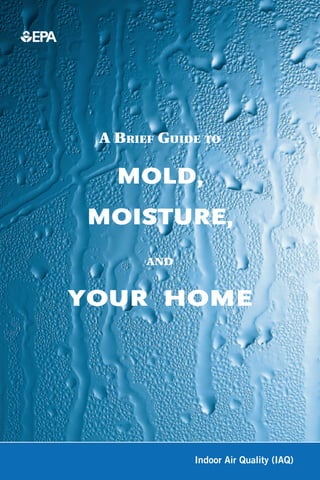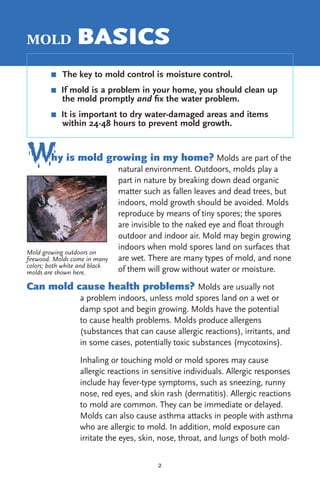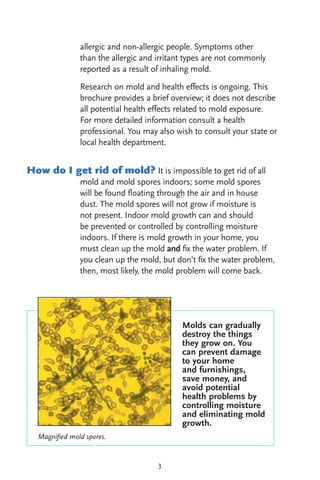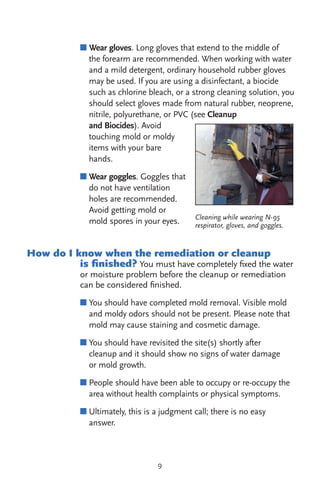This document provides a brief guide for homeowners on cleaning up residential mold problems and preventing future mold growth. It discusses why mold grows, potential health effects, who should perform cleanup, and cleanup guidelines. The key points are that mold grows from moisture, it can cause allergic reactions or other health problems, small amounts of mold can be cleaned by homeowners while professional help is recommended for large amounts, and fixing any water issues is critical to prevent mold from returning.



















